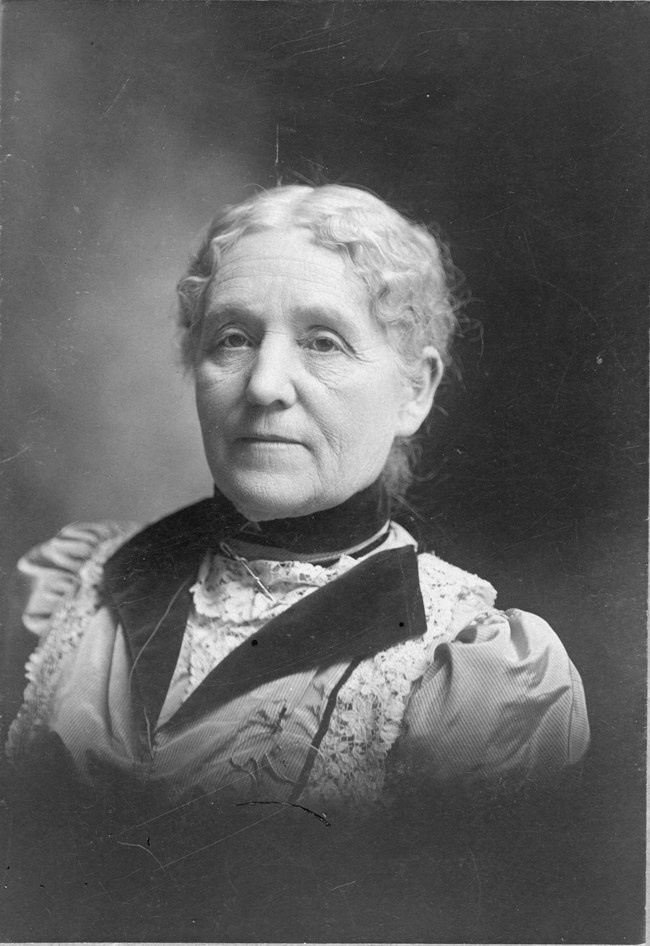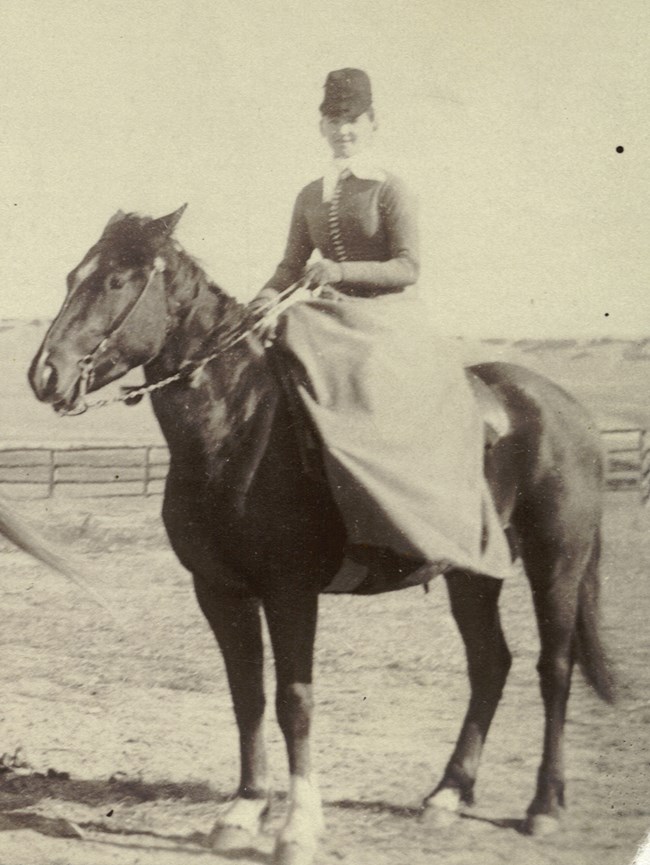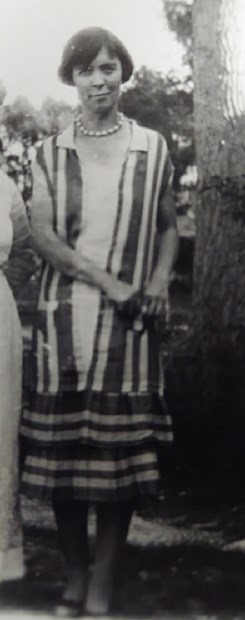
NPS Photo Mary Eliza Graham moved from Three Rivers, MI to Cheyenne, WY with her husband, Dr. E. B. Graham, and two daughters for his health in 1861. As most young women of that age she had learned to spin and weave and dye and sew the woven cloth, she cooked and preserved all the products grown on her family’s farm, made candles, churned butter and many other tasks that served her well in her move west. She was active in the woman’s suffrage movement with Susan B. Anthony. When Graham homesteaded on the Niobrara River the family spent time between the O4 Ranch and Cheyenne. Mary and the two daughters, Clara and Kate, were the first women to make a permanent home in Sioux County. She later lived with her daughter Kate and James Cook after he bought the ranch and renamed it Agate Springs Ranch. She managed the household for many years, led religious services for cowboys on the ranch. She delivered babies and nursed pioneer mothers through the critical time of childbirth. Mrs. Graham typified the finest in pioneer women, bringing with her beauty, kindliness, self-sacrifice, devotion, and a pride in maintaining the best in family life, home-making and loyalty and faith in those she loved. In 1892 Mrs. Graham became the first Postmaster at the Agate Post Office and kept the first official weather station at Agate. Her last years were spent in California near her oldest daughter, Clara Heath. Her remarkable vitality, inherited from her pioneer ancestors prolonged her life to a great age of 96. Mary Eliza Hutchinson Graham is one of America’s great women in history. 
NPS Photo Kate Graham, the younger daughter of Dr. E. B. and Mary Graham, was a scholar and musician and taught herself French. She married James Cook, an adventurer and forward thinking man whom the family met in Cheyenne. Kate and James first lived in New Mexico on a ranch that he managed then came back to Sioux County where they bought the ranch from her father and changed the name to Agate Springs Ranch. She had found fossils near the Agate Fossil Hills and shared that with James who later contacted the early paleontologists. They had two sons, Harold and John, and she ran the household and raised the two boys facing wolves, rattlesnakes, and ranch debt until she became ill in 1909. She was quite a horsewoman and once rode a bucking horse, sidesaddle, down the streets of Cheyenne. The family rode together at the ranch where Kate sometimes rode Billy American Horse, a gift from American Horse. 
NPS Photo Eleanor Barbour was an educated woman, with passions in geology, paleontology, and music. She was raised in a scientifically active household, after all. She was the daughter of E.H. Barbour, Director of the Nebraska State Museum at the University of Nebraska. Through her father, she met and later married Harold Cook, son of James Cook. Harold and his father owned and operated the Agate Springs Ranch, home of the fossil beds the Park Service now protects. She had a distinguished record at the University and had studied abroad. The years that Harold and Eleanor were married and lived in “Agate East,” where the monument sits today were the heyday of fossil collecting at the quarries. Eleanor threw herself into her complex role at Agate – part housewife and mother, part scientific peer -- with intelligence and humor. Later, she taught English, Geology, and Paleontology at Nebraska State Normal College in Chadron (now called Chadron State College). She worked in the field and took her students on excursions to the Agate Fossil Hills. At the request of College President Robert Elliott, she helped gather geologic and paleontological material to open their Museum of Geology. She became curator of that museum, which later became The Eleanor Barbour Cook Museum of Geology, which still inspires and educates college students and the public today. Eleanor Barbour Cook’s aunt Carrie was a small woman and not very robust and was discouraged against taking college courses so studied at an art school and taught wood carving and china painting. During her free time she assisted at the museum that she and her brother Erwin formed. Fossils fascinated her and through her collaboration with Erwin she became a “preparatory” of fossil specimens that arrived from the field. Working on slabs of sandstone and clay she dug the bones from them, fitting together with expert fingers the shattered fragments of bone. She also wrote articles for scientific journals about the expeditions of the University of Nebraska. She passed away in 1942 after 49 years in the field of paleontology. |
Last updated: May 17, 2024
